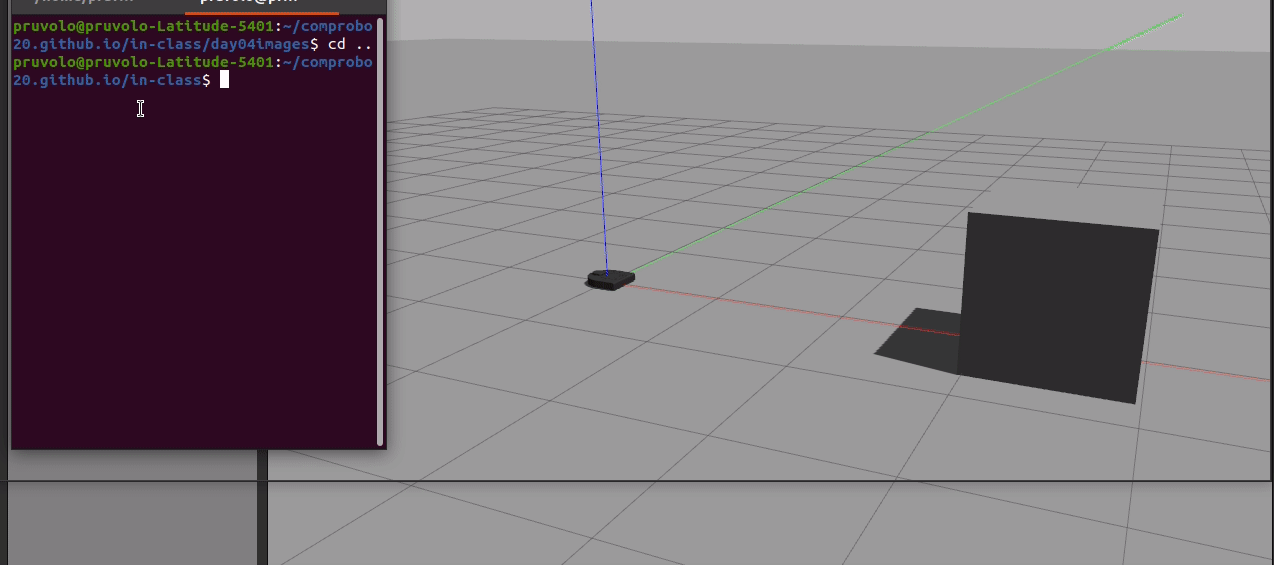Proportional Control and ROS Parameters
Today
- Proportional Control and ROS Parameters
- Studio Time
For Next Time
- Work on the
the Warmup Project (due next Monday, the 28th).
Proportional Control
So far we’ve programmed robots to choose between a small set of motor commands (move forward, stop, etc.) based on sensor readings. Today, we will be experimenting with setting the the motor command proportional to the error between the robot’s current position and the desired position.
To get the idea, program the Neato to adjust its position so that it is a specified (target) distance away from the wall immediately in front of it. The Neato’s forward velocity should be proportional to the error between the target distance and its current distance. Note: it’s tricky to get the sign correct, run through a few mental simulations to make sure the robot will move in the right direction.
If you’re still a bit fuzzy on how to structure your code in ROS we have provided some starter code (look for
wall_approach_starter.pyin thein_class_day04_sample/scriptsfolder.
A helpful tool for visualizing the results of your program is to use the
$ rqt
Next, go to plugins -> visualization -> plot.
Type /scan/ranges[0] (if that is in fact what you used to calculate forward distance) into the topic field and then hit +.
Getting Fancy
To make your node more configurable, use (see the rosparam documentation on ROS wiki for more information). For instance, if you want to make the target_distance configurable, consider launching your node like this:
$ rosrun in_class_day04 wall_approach.py _target_distance:=1.5 _k:=0.5
To access the parameter inside of your Python code use:
target_distance = rospy.get_param('~target_distance')
Here is a demo of our script, wall_approach_fancy.py that uses ROS parameters as well as the tool dynamic_reconfigure for easy manipulation of various node parameters. You can find wall_approach_fancy in the comprobo20 upstream repo in the package in_class_day04_sample.
 .
.